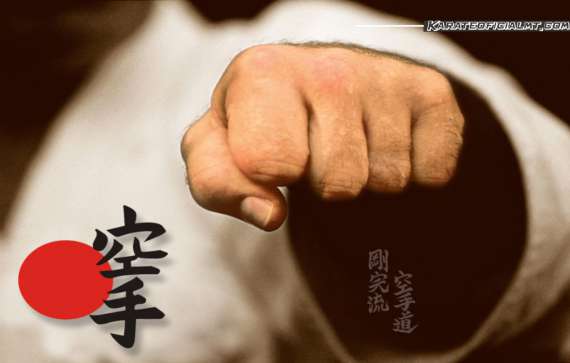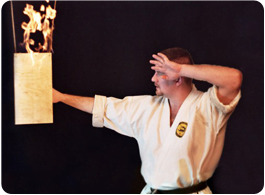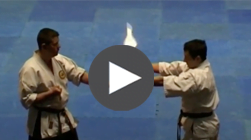LETTER 7. – Sente no kata.
The context IMHO that Funakoshi was using the term “sente no kata” means that there is no first attack in the kata. Kata is ubiquitous for karate, the term we all know that has become synonymous with Uchinandi.
Can you or should you use the intermediary movements of “karate” to stop a potential attack at the moment you anticipate it ? IMHO that is up to the person. Is there a moral question as to whether you should attack the potential attacker first ? Again it is up to the individual and the circumstance. Unless you are a mind reader how can you know someone will really attack you ?
Sente no kata again IMHO is the fighting strategy of Uchinandi. In Okinawa there is two basic scenarios that a fight will take. One, a surprise attack, and two, a situation that escalates into a physical encounter. The kata fighting postures (kamae) and intermediary movements are designed for these two scenarios. These two scenarios are driven by the fact that Uchinandi is a self-defense based solution and works best when the opponent makes the first movement of attack and Uchinandi can be used in a counter movement. In the escalation scenario the kata and two man drills are used to prepare you to defend yourself. Again the defense is seen as the best way to take advantage of the opponent.
In Japan, for reasons that have been well documented by others, the Butokai required that there be a measurement of skill of the new martial art, “karate”, so therefore the ippon shobo kumite was devised. With this innovation karate introduced a new scenario to a potential fighting situation, mutual agreed upon combat. With the addition of the mutually agreed upon combat scenario the techniques of the kata did not produce the skills needed and the kata began to change along with the kihon of “karate”.
Mutually agreed upon combat is not consistent with the dojo kun or the philosophy of Uchinandi so the process of change began in the kata and techniques of karate. The purpose of the kata was changed. This change has brought on a vast misunderstanding of Uchinandi that is evidenced by numerous articles and opinions in karate magazines and internet discussions venues that discuss the relative ineffectiveness of the old ways vs. the new modern ways. In a recent article in Black Belt Magazine a prominent personality in the world of “karate” was featured showing how the old techniques of Tang So Do do not work in the ring. Well I guess they should not work since they were not designed for mutually agreed upon combat and scoring points. Also in the same issue of the magazine was a gentlemen that was showing the differences of the old blocks of karate and how they had been misrepresented and now he was showing how they really should be used. All of his demonstrations were designed against an opponent that was not attacking by surprise or and escalation of a physical situation. I might add this article was written by someone representing themselves as an Okinawan stylist).
IMHO the above has led the gross population of people practicing “karate” to misunderstand the techniques and therefore not have confidence in them. This loss of confidence has led people to change the techniques for what they think will serve them best. The Japanese did it and the rest of the world has followed.
Sente No kata is a descriptive term of Uchinandi. It is a key that leads to the understanding of the kata.
The terms that were mentioned in some post; sen no sen, go no sen, and sen sen no sen are as most of you know from Kendo. The origin of these terms are from the strategy of fighting with a sword. Combat in Japan took the form of all three scenarios and therefore these strategies work and work well but they are not from an Okinawan perspective part of Uchinandi. All three concepts violate Uchinandi except for go no sen, which is the moment after the initiative.
Please remember the word kata was Japanese and was introduced into Okinawan karate by the Japanese. Prior to the word kata being used the Okinawans simply applied the term “di” after the name; for example “Seisan di”.
Just my opinion because there are no facts.
Gumbatte
Dan Smith


